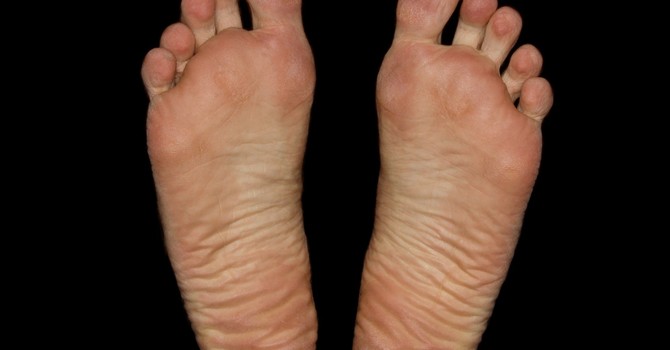
Many injuries occur when the body is fatigued¹, typically in the second half of games. Likely most of us are familiar with the “too much too soon” training errors leading to injuries in endurance sports like running and cycling. As a medical practitioner working with athletes, I am always on the hunt for ways to make my patients more resilient, more efficient, and increase the body’s capacity to tolerate stress. Through my 20+ years in practice, I’ve seen the trends in running health come and go. We’ve seen the forefoot/rearfoot debates and debunks, foot pronation obsession, and pelvic drop myopics. I still give those mechanics a thought, but research is now prioritizing strength training, regardless of “poor” mechanics and foot strike.
Storniolo et. al.² studied 14 male runners (I’m aware of the small sample size) participating in an 8 week twice a week strength training program involving 45* leg press, squats, knee extensions (quads), knee flexions (hamstrings), and plantar flexion (calves) exercises. They found (not surprisingly given many other studies with similar findings) that strength training 2x/week improved metabolic economy in just 8 weeks. However, as much as myself and fellow medical practitioners would hope, it did not result in improved running mechanics.
While the study was a small sample size on only male runners, it is a reminder that strength training alone might not stop you from heel striking or a collapse in your knee.
Brad Neal et. al.³ found female runners with patellofemoral pain improved running mechanics by introducing running retraining (step rate, step width, mirror/video feedback), but not by strength training. However, both running retraining and strength training did have a positive effect on pain and function.
A takeaway from these studies is that strength training alone (and possibly rehab exercises) might not improve running technique and mechanics, however, it can improve metabolic economy which might be responsible for improving the body’s resiliency to tolerate higer loads related to running thus reducing the likelihood of becoming injured. Maybe it’s time we think about strengthening to improve running economy and reducing pain rather than correcting form and gait. Leave the mechanics correction to running retraining tactics and cues.
Limitations to these studies:
- Small sample size
- Does strength training improve endurance of posture, reducing the risk of fatigue causing poor mechanics
As we treat each client individually, we still approach running injuries from all sides- training errors, shoes, mechanics, strength/stability/fatigue, mobility, and recovery.
References:
1. Nagle K, Johnson B, Brou L, Landman T, Sochanska A, Comstock RD. Timing of Lower Extremity Injuries in Competition and Practice in High School Sports. Sports Health. 2017 May/Jun;9(3):238-246. doi: 10.1177/1941738116685704. Epub 2017 Feb 1. PMID: 28146414; PMCID: PMC5435151.
2. Storniolo JL, Fischer G, Bona R, Pinho A, Moorhead AP, Tartaruga M, Finatto P, Peyré-Tartaruga L. Transfer of strength training to running mechanics, energetics, and efficiency. Biol Sport. 2022 Jan;39(1):199-206. doi: 10.5114/biolsport.2021.102807. Epub 2021 Mar 6. PMID: 35173378; PMCID: PMC8805355.
3. Neal BS, Barton CJ, Gallie R, O’Halloran P, Morrissey D. Runners with patellofemoral pain have altered biomechanics which targeted interventions can modify: A systematic review and meta-analysis. Gait Posture. 2016 Mar;45:69-82. doi: 10.1016/j.gaitpost.2015.11.018. Epub 2015 Dec 29. PMID: 26979886.
Dr. Jessica Greaux
Contact Me


